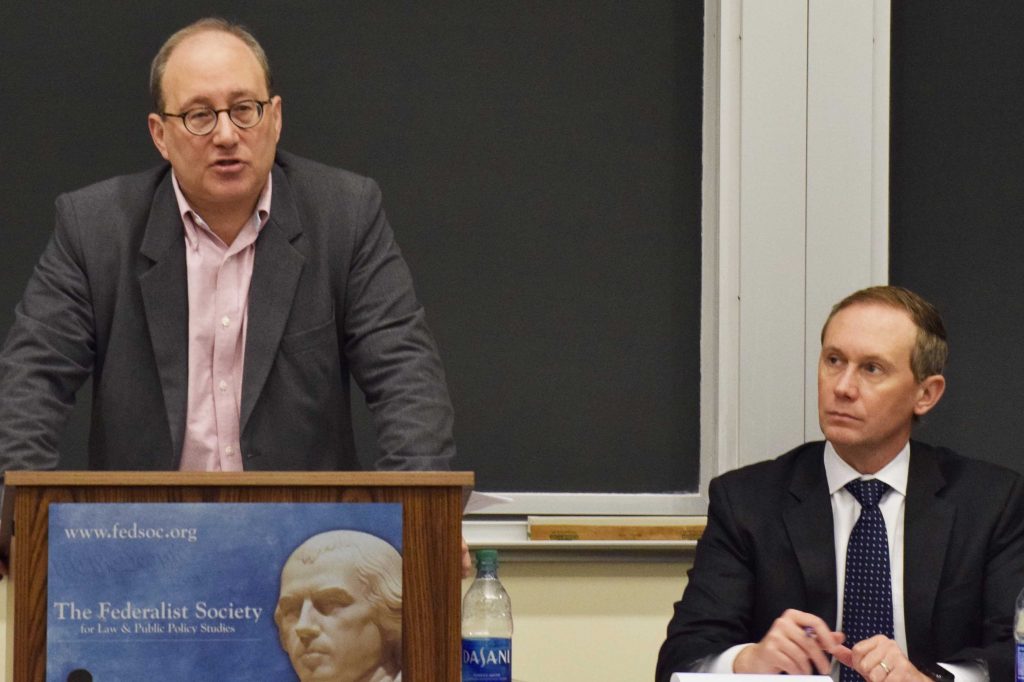The former chief counsel of the Federal Drug Administration said during a visit to BC Law February 13 that many of the concerns expressed about “big pharma” by the American public—including by politicians—are based on misconceptions.
Daniel Troy, who sat on a Federalist Society panel with BC Law Professor David Olson, acknowledged people’s heightened sensitivity around health issues by quoting American intellectual Susan Sontag. “Everyone who is born holds dual citizenship, in the kingdom of the well and in the kingdom of the sick,” and is sooner or later obliged to identify as a citizen of the latter, she said. In other words, Troy explained, health is so fundamental to human life that the pharmaceutical industry has to keep the focus on the patient and its pricing must be understood as a reflection of drugs’ value in saving lives.
Still, a disconnect prevails. By way of example, Troy pointed to what happened when a cure for hepatitis C was found. The company that developed the drug was excoriated “even though it immediately saved lives,” Troy said, because the public was incensed about its price. People were not thinking long term, he argued, and not taking into account the inherent value of the drug for years to come.
Troy, a long-time industry insider, also sought to debunk the notion that big pharma is the principle culprit for the high cost of health care in the US. In fact, he said, it accounts for only 10 percent of all costs. One cause of the public’s misunderstanding is the visibility of drug prices in the marketplace, he explained, while much of health care’s other costs are less transparent and therefore not so easily targeted.
Industry critics point to the declining life expectancy in the US as evidence that health care funds are not being invested correctly. Troy, however, citing as examples the high rate of gun and car accident deaths, said it should be understood that such societal factors are culpable for the high rate of premature deaths in the US. “These problems cannot be tied down to poor health care when they are not all correlated to it,” he said.
From a global perspective, the view of American big pharma grows even more complex. The US invests 40 percent more in its pharmaceutical industry than the rest of the world’s nations do in theirs, Troy explained, so the others are getting a “free ride” on the backs of American drug companies. The upside for American consumers is that they have better access to drugs. In the US, he said, 95 percent of approved new medicines are available immediately to consumers. In similar Western countries, the rate is only 65 percent, as in France, where patients are often unaware that treatments even exist.
As he wrapped up his presentation, Troy emphasized the need to maintain IP protections for the pharmaceutical industry. Those protections are the reason that the US remains the leader in drug development, he said. Furthermore, he noted, while importing drugs from other countries may seem like a good solution to bring down prices, 10 percent of all drugs in the world are counterfeit, which would introduce an element of uncertainty into our market.
Professor Olson concurred with Troy’s analysis of patent rights as being extremely important for the industry. The key, he stated, was finding the right balance of protections between the industry and the public.
“We don’t want to give 100-year patent rights to companies, because at some point the monopoly cost would be too great. But at the same time, we want to incentivize development of new drugs by protecting their owners from competition for a limited amount of time,” he said.


